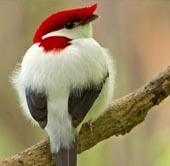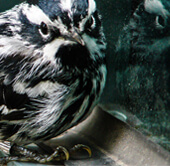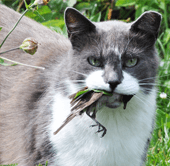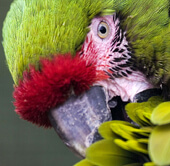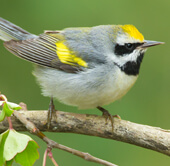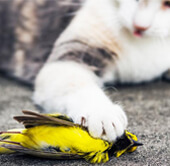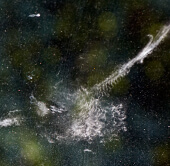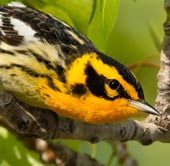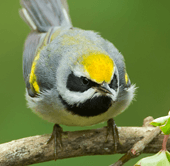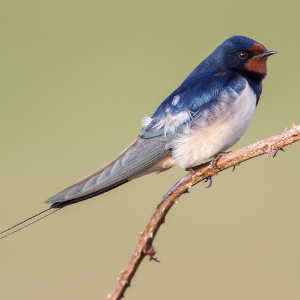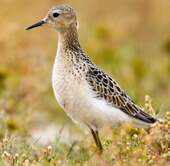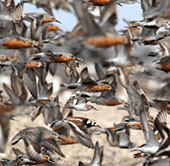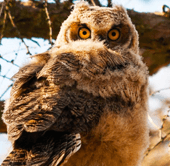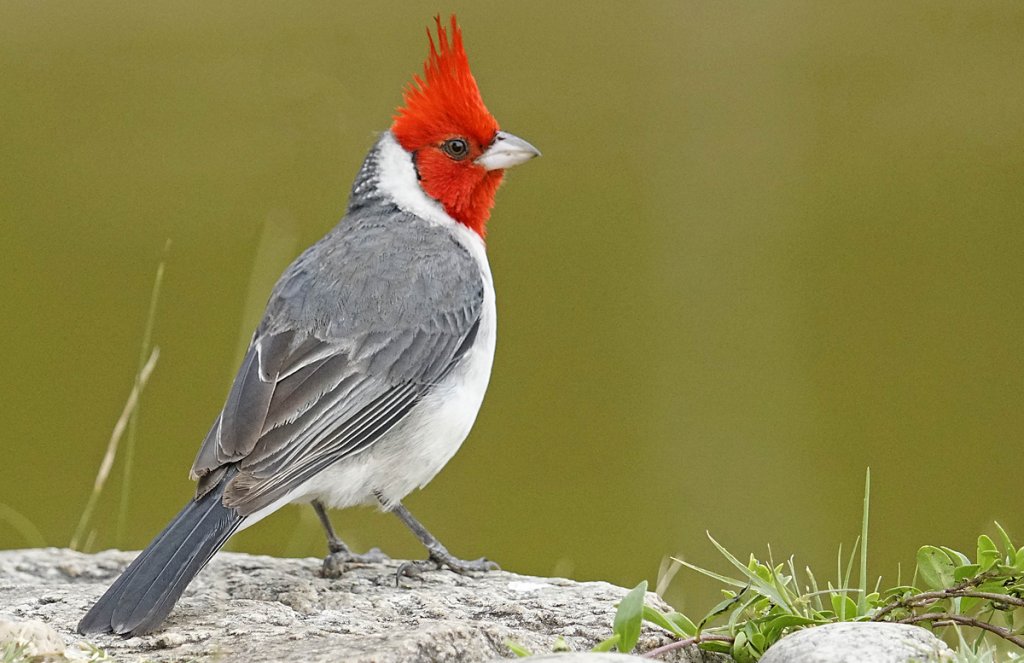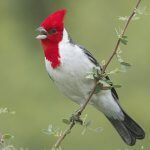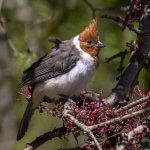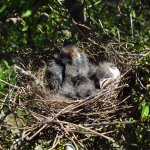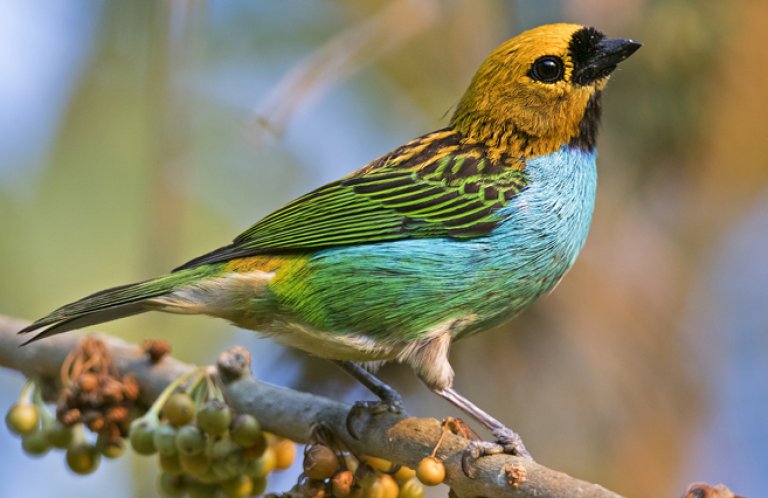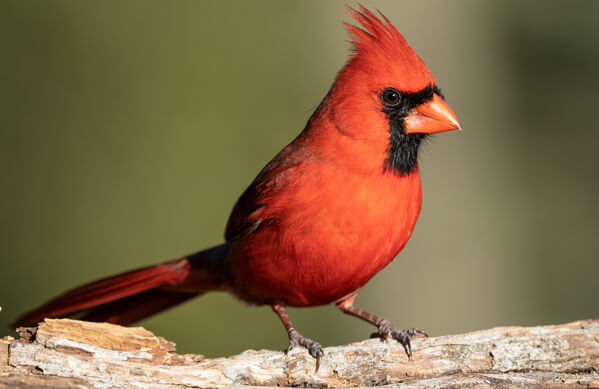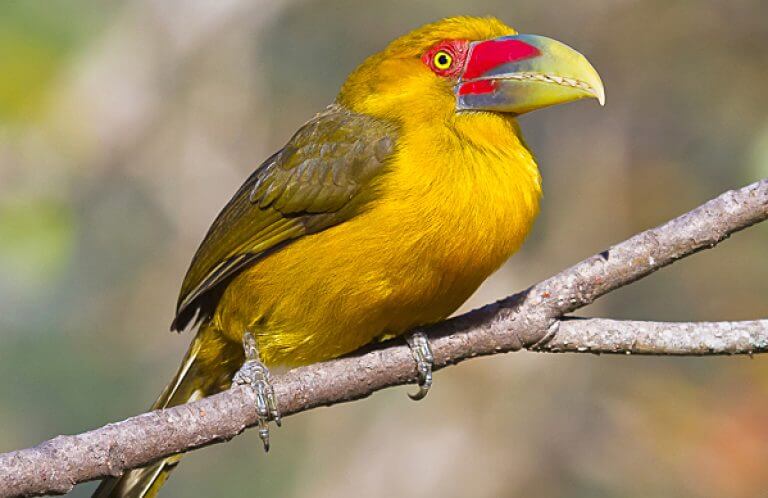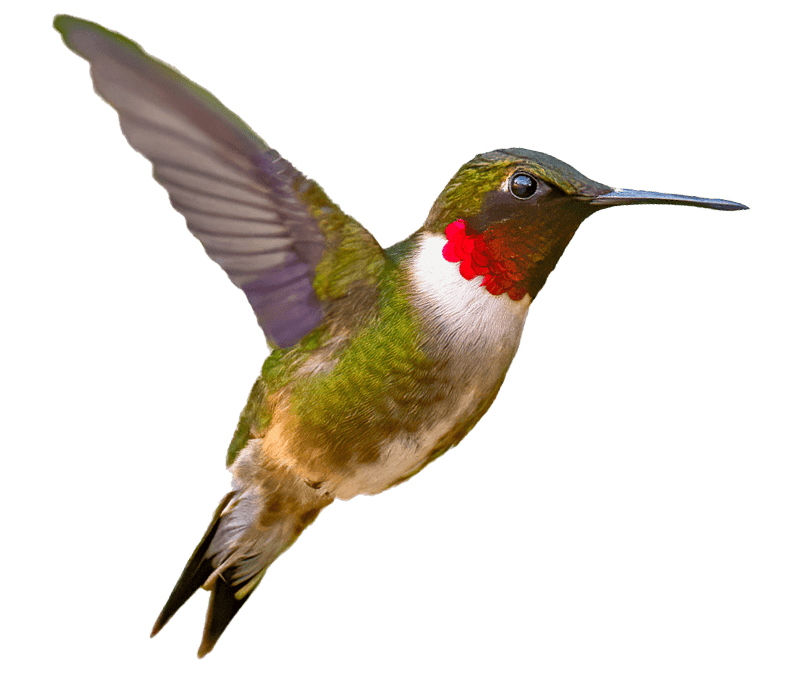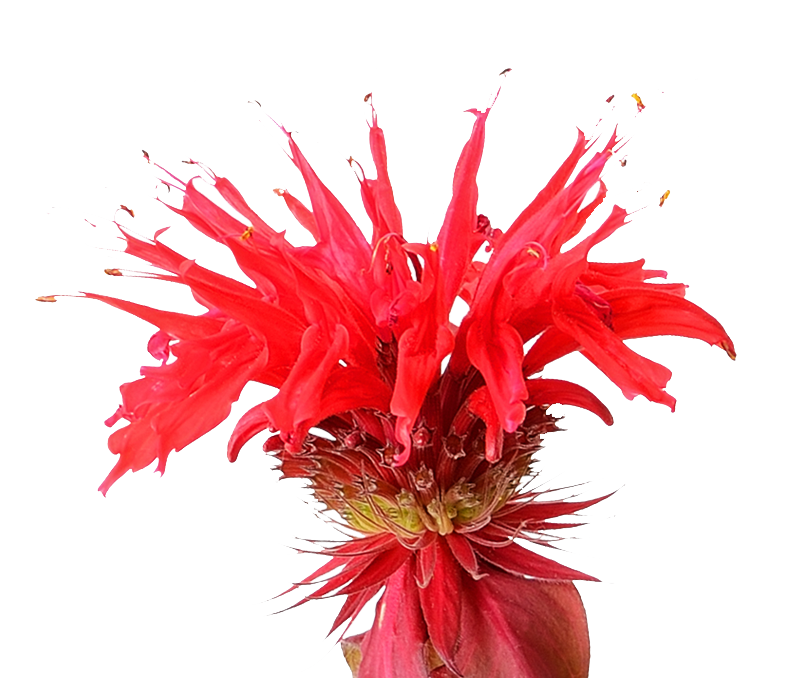About the Red-crested Cardinal
The handsome Red-crested Cardinal is well-named, with a bright red crest that the bird can raise and lower and a red head and chest. It's white underneath, with a gray back, wings, and tail and a conical, light-colored bill. Juvenile Red-crested Cardinals are similar to the adults, but are brownish-orange where the adults are red.
The Red-crested Cardinal is sometimes called the Brazilian Cardinal, a nod to its South American distribution. Its genus name, Paroaria, derives from Tiéguacú paroára, a name for a small yellow, red and grey bird in the extinct, indigenous Tupi language of Brazil.
Although the Red-crested Cardinal resembles an especially dapper Northern Cardinal, it's not closely related to that species.
Tropical Tanager
Contrary to its name, the Red-crested Cardinal is not a cardinal at all; rather, it belongs to the huge Thraupidae (Tanagers and Allies) family of the neotropics, the second-largest bird family in the world. This widely varied family contains over 385 bird species in more than 100 genera, including tanagers such as the Glistening-green and Gilt-edged Tanagers as well as dacnises, flowerpiercers, and ground-finches.
The largest bird family in the world, the tyrant-flycatchers (Tyrannidae), is also endemic to the neotropics, and encompasses over 400 species including the Johnson's Tody-Flycatcher, Many-colored Rush-Tyrant, Great Crested Flycatcher, and Eastern Kingbird.
Song and Sounds
The song of the Red-crested Cardinal is a slow, rather halting, melodious series of whistles and warbles. Its call is a nasal, ascending phwit! Listen below:
Song:
Calls:
Breeding and Feeding
The Red-crested Cardinal forms monogamous pairs during its breeding season, courting through displays such as tail-fanning, bill-clacking, and song. Once mated, the male builds an open-cup nest of plant fibers and hair, concealed in low shrubbery. The female then lays and incubates a clutch of 2-4 eggs, which hatch in around two weeks. Both parents feed the hatchlings, which fledge after another two weeks. The male continues to guard and feed the juvenile birds, which become independent in roughly another month.
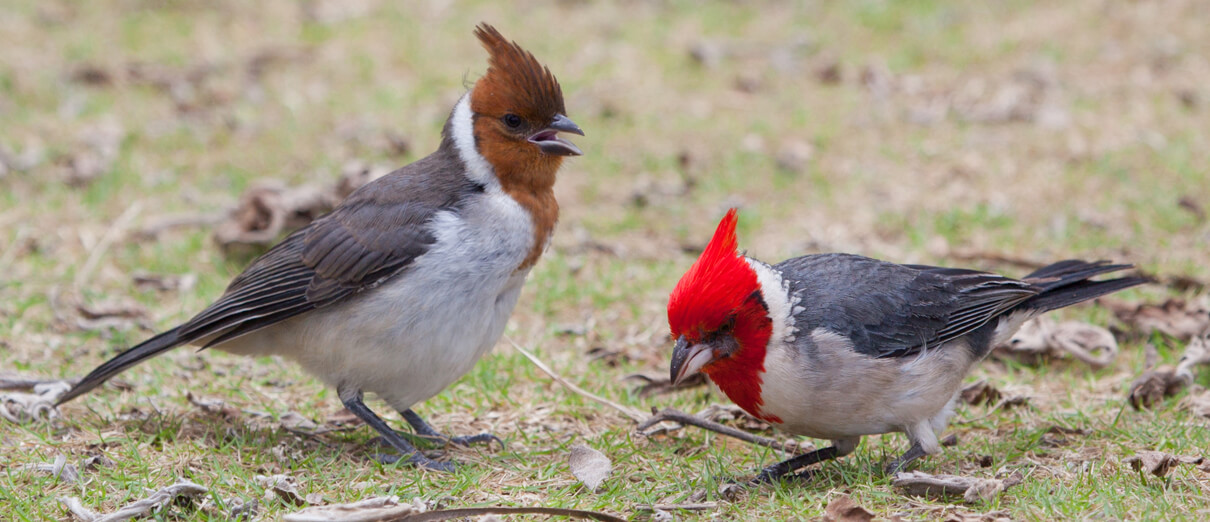
Many Red-crested Cardinal nests are lost to predators, but pairs readily re-nest. This species is often parasitized by Shiny Cowbirds, which will puncture the cardinal's eggs before laying their own. However, the Red-crested Cardinal recognizes the unfamiliar cowbird eggs and quickly tosses them out of its nest.
The Red-crested Cardinal feeds on a mixture of small seeds, fruits, insects, and other arthropods such as spiders. It forages on or near the ground in low trees and shrubs, and is typically spotted in pairs, small groups, or even mixed-species flocks.
Region and Range
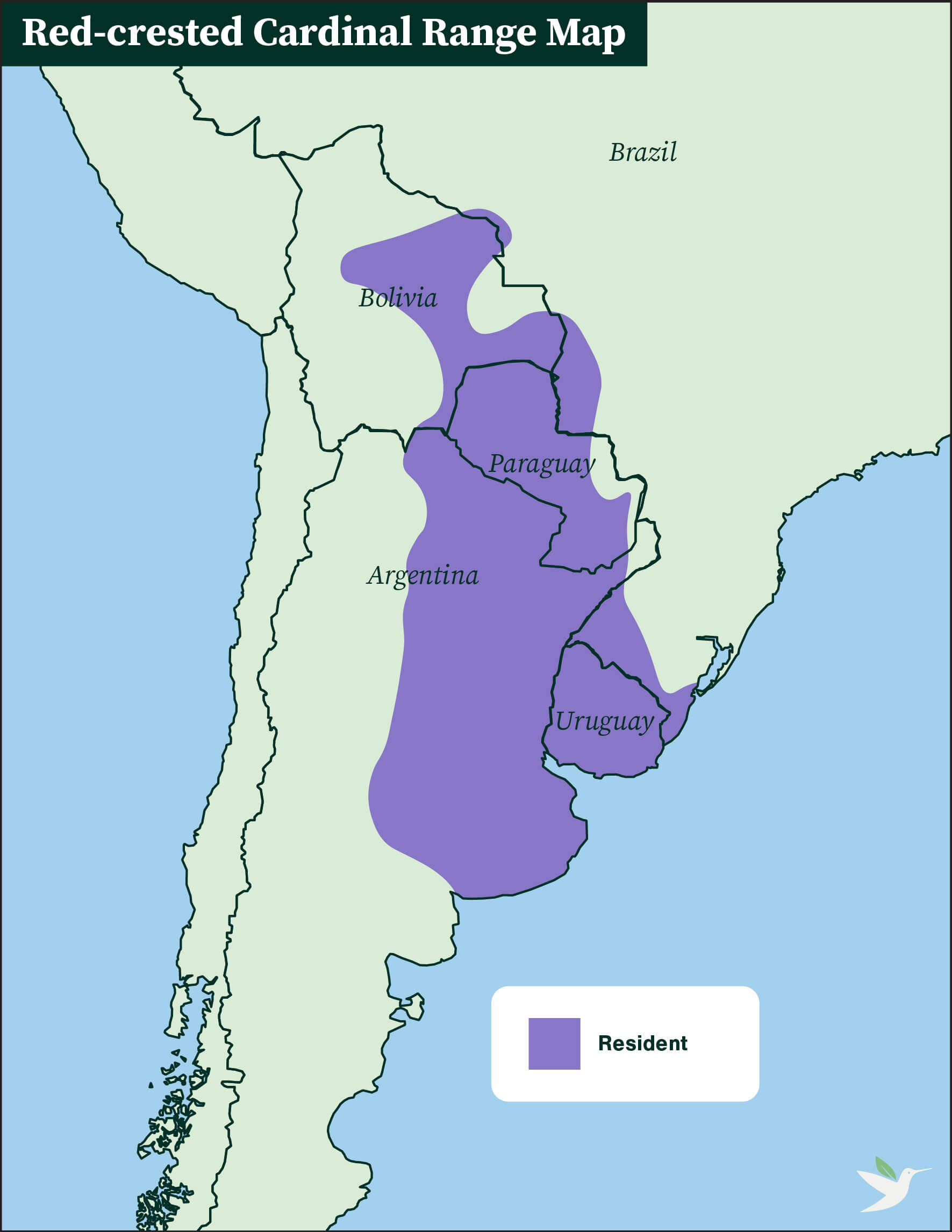
The Red-crested Cardinal is native to South America, specifically southeastern Brazil, eastern Bolivia, Paraguay, Uruguay and northern Argentina. This attractive species is a popular cage bird and was brought to many other countries through illegal trapping. Introduced populations are now found on most of the Hawaiian Islands, and in Chile, Puerto Rico, California, and Florida.
Conservation
As mentioned above, the Red-crested Cardinal is a popular target of the illegal cage bird trade. However, its wild populations remain stable, unlike other often-trapped species such as the Saffron Toucanet and Great Green Macaw.
Several ABC-supported reserves provide safe sanctuary for the Red-crested Cardinal, including the Barba Azul (Blue-throated Macaw) and Red-fronted Macaw Reserves in Bolivia, which protect the parrots for which they are named as well as a variety of other species, and Brazil's Canudos Reserve, which shelters the beautiful and endangered Lear's Macaw.
Get Involved
Many of the rarest bird species in the Western Hemisphere remain relatively unknown. You can learn more about these birds and the threats they face by signing up for ABC's Bird of the Week email series, which frequently highlights these fascinating birds.
American Bird Conservancy and our partners throughout Latin America and the Caribbean have created and expanded more than 100 bird reserves, which protect upward of 1.1 million acres of vital habitat. Together, we've planted more than 6.8 million trees, helping to restore degraded and damaged habitat. You can help us continue to protect endangered birds by making a gift today.

